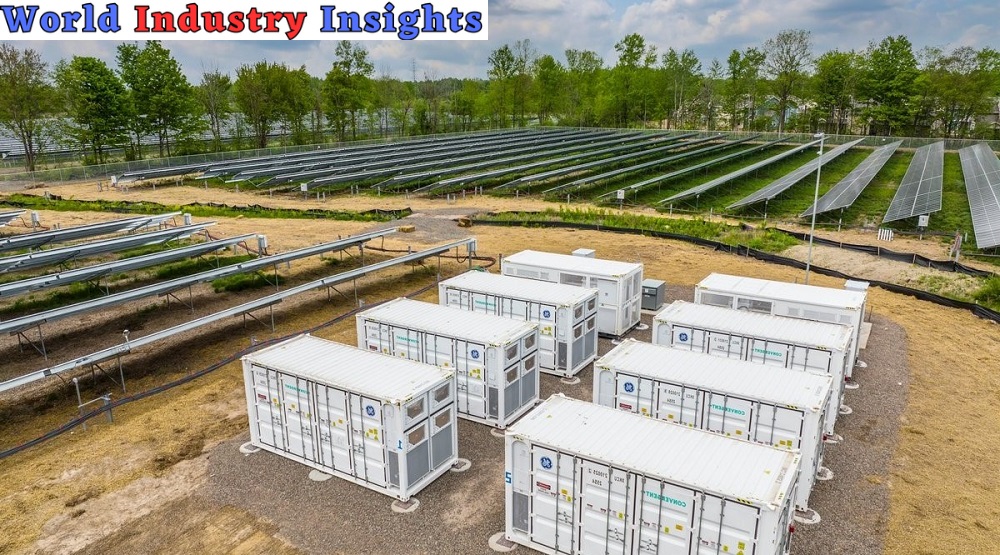Inflation Reduction Act: Amidst the scorching heatwaves and soaring temperatures plaguing the United States, the Inflation Reduction Act (IRA) is on the cusp of its one-year anniversary, and its profound influence on the realm of clean energy is truly noteworthy. On that momentous day of August 16, the IRA sparked a veritable boom in clean energy technology and investments, effectively ushering in a fresh era of sustainable progress.
Beneath the scalding sun, three men meticulously affixed solar panels to the façade of a two-story abode near the Kentucky River, an idyllic scene set against the backdrop of a state once renowned for coal production, now transformed by the monumental shift towards cleaner energy sources.
Heather Baggett, a resident of Frankfort, found satisfaction in the wise and eco-conscious decision to embrace renewable energy, a move that not only benefited the environment but also her family’s finances. “The incentives provided by the Inflation Reduction Act made complete sense for us,” she affirmed. “Beyond political considerations, we sought to make a tangible impact and lessen our carbon footprint.”
Within a mere year, the IRA had propelled a nationwide surge in investments targeting battery and electric vehicle (EV) manufacturing. An astonishing 80 major clean energy manufacturing facilities were unveiled by the American Clean Power Association, signifying seven years’ worth of investment commitment.
Jesse Jenkins, the esteemed leader of the REPEAT Project and a Princeton professor, marveled at the remarkable frequency with which new factory facilities were being established. The nation was, for the first time in decades, witnessing a renaissance in manufacturing, manifesting the long-cherished vision of reclaiming its status as an industrial powerhouse.
“The scale of investments and the establishment of manufacturing facilities is truly remarkable,” Jenkins remarked, an unequivocal testament to the profound significance of this resurgence, which heralds a pivotal turning point in the nation’s journey towards a greener and more sustainable future.
In the annals of the country’s climate change response, the Inflation Reduction Act stands as the most substantial and influential initiative, breaking free from the decades-long grip of fossil fuel lobbying. The ultimate aim of the IRA is to quell carbon emissions and thwart the relentless warming of the planet.
The crux of the law lies in the endeavor to construct an expansive clean energy infrastructure while decisively reducing greenhouse gas emissions through the creation of self-reliant domestic supply chains.
The IRA strategically focused on curbing the pollution emanating from the transportation sector, the largest culprit of all. Siemens, a multinational technology titan, adroitly capitalized on the surging demand for batteries and EV charging stations engendered by the transformative U.S. climate policy.
Barbara Humpton, the illustrious CEO of Siemens USA, ascribed the company’s growth in the battery and battery storage realm to the federal investment facilitated by the IRA. “The federal government’s involvement has markedly hastened our progress toward a tipping point in clean energy technology,” she confidently asserted.
Through the IRA’s affirmative impetus, energy storage innovation and EV adoption were vigorously promoted, heralding an era where advanced battery technology ensured seamless grid operations even during periods of low wind and solar activity.
The breathtaking pace of the energy storage industry’s expansion drew comparisons to the meteoric rise of solar energy a decade earlier, as astutely observed by Michael McGowan, the head of North American infrastructure private markets at the esteemed consulting firm Mercer Alternatives.
“The Inflation Reduction Act has set the energy storage sector on a trajectory akin to that of solar a decade ago,” McGowan proclaimed, an epiphanic discovery that will undoubtedly shape the contours of a sustainable energy future.
Read More: Maine Lawmakers Approve Budget: with Paid Family Leave, Prioritizing Workers
Post the IRA’s legislative triumph, First Solar, the preeminent U.S. solar panel manufacturer, witnessed a surge in record sales, with the mounting demand resulting in a backlog of orders, signifying years of manufacturing capacity already reserved, as highlighted by Derrick Flakoll, a policy associate at Bloomberg NEF North America.
“This bullish optimism epitomizes the boundless potential of the U.S.-produced solar market,” Flakoll opined, underscoring the unprecedented opportunities that lie ahead.
Additionally, the IRA provided the impetus to embrace promising but cost-intensive technologies aimed at immediate decarbonization. Jason Mortimer, the senior vice president of global sales at EH2, a manufacturer specializing in large, low-cost hydrogen electrolyzers, credited the law for precipitating the adoption of hydrogen technology at an extraordinary pace.
“Thanks to the IRA, hydrogen is rapidly gaining traction,” Mortimer effused, exuding confidence in the United States’ ascent to the vanguard of the global hydrogen market, on par with the trailblazing strides made by Europe.
Eager experts laud the early successes of the IRA, foreseeing a tidal wave of investments in wind and solar manufacturing in the years to come, with the full extent of the law’s impact anticipated between 2026 and 2028.
Notably, other nations have embarked on accelerating their clean energy transitions as well. Both Canada and Europe have introduced robust renewable energy manufacturing policies, further propelling the cause of global sustainability.
Highlighting the competitive landscape, Neil Mehrotra, an assistant vice president and policy advisor at the Federal Reserve Bank of Minneapolis, and a contributor to a Brookings Institution report on U.S. law, underscored the strategic moves undertaken by European and Japanese automakers to realign their supply chains and vie for prominence in the burgeoning U.S. clean energy market.
While enjoying broad-based support, the IRA has sparked heated debates concerning its budgetary implications. As per the Congressional Budget Office, tax credits tied to the law are estimated to cost a substantial $270 billion over a decade. However, analysts at the Brookings Institution anticipate businesses to leverage the incentives with greater gusto, potentially exacerbating the federal government’s financial burden.
Despite the promising strides towards a sustainable future, the growth of the U.S. electric grid remains a critical imperative to accommodate the influx of new renewable energy sources and escalating demands, such as widespread EV charging. The IRA’s climate goals necessitate a grid that is both resilient and adaptable.
A heartening consequence of the IRA’s implementation has been the revitalization of local economies and the generation of new employment opportunities during this transformative energy revolution.
Yet, the law is not without its detractors. Some Republicans, apprehensive about its costs and potential economic repercussions, have contemplated the repeal of major portions of the legislation.
Fred Eames, a regulatory attorney at Hunton Andrews Kurth, offers a pragmatic perspective, suggesting that, despite its unwavering commitment to clean energy, the United States will inevitably remain dependent on fossil fuels for several decades to come.
The future trajectory of the IRA hinges upon the cultivation of bipartisan support and a shared dedication to a sustainable energy transition. While challenges persist, the one-year anniversary of this groundbreaking legislation signals a momentous step towards a cleaner, greener, and more prosperous future, not just for the United States but also for the world at large.
Our Reader’s Queries
What does the Inflation Reduction Act do exactly?
The Inflation Reduction Act has made significant changes to the clean energy Investment Tax Credit. Now, investors can receive up to a 30% credit for their investments in renewable energy projects such as wind, solar, and energy storage. To qualify, these projects must meet prevailing wage standards and employ a sufficient number of qualified apprentices. This is a great opportunity for those looking to invest in clean energy and support the growth of the industry.
Do I qualify for Inflation Reduction Act?
If your household earns between 80% to 150% of the median income in your area, you may be eligible for rebates of up to 50% of the project cost. For those earning below 80% of the median income, rebates of up to 100% of the project cost are available.
What is the income limit for the Inflation Reduction Act?
To qualify for this offer, buyers must have a modified adjusted gross income (MAGI) of less than $75K (or $150K for joint filers). The vehicle being purchased must have a MSRP of less than $25K, weigh less than 14,000 pounds, and be at least two years old (model year must be at least 2 years older than the year of sale.)
What are the benefits of the Inflation Reduction Act for homeowners?
The Inflation Reduction Act by the federal government is set to allocate funds for enhancing the energy efficiency of entire households. Additionally, households with low or moderate income will receive point-of-sale rebates for upgrading their panels and purchasing high-efficiency electric appliances, including heat pumps for space heating and cooling. This initiative aims to promote sustainable living and reduce energy consumption while providing financial relief to those in need.


